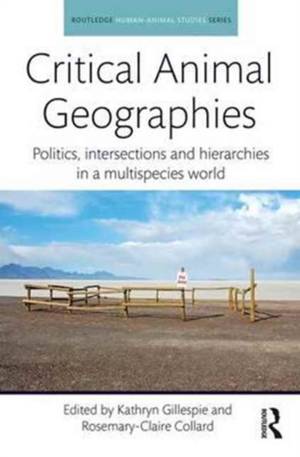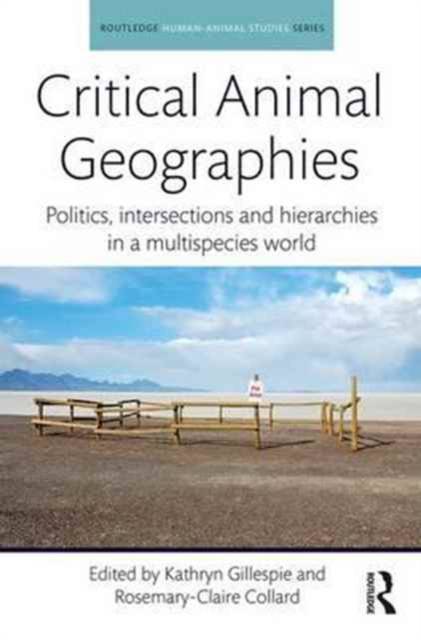
- Retrait gratuit dans votre magasin Club
- 7.000.000 titres dans notre catalogue
- Payer en toute sécurité
- Toujours un magasin près de chez vous
- Retrait gratuit dans votre magasin Club
- 7.000.000 titres dans notre catalogue
- Payer en toute sécurité
- Toujours un magasin près de chez vous
Critical Animal Geographies
Politics, Intersections and Hierarchies in a Multispecies World
Description
Critical Animal Geographies provides new geographical perspectives on critical animal studies, exploring the spatial, political, and ethical dimensions of animals' lived experience and human-animal encounters. It works toward a more radical politics and theory directed at the shifting boundary between human and animal. Chapters draw together feminist, political-economic, post-humanist, anarchist, postcolonial, and critical race literatures with original case studies in order to see how efforts by some humans to control and order life - human and not - violate, constrain, and impinge upon others. Central to all chapters is a commitment to grappling with the stakes - violence, death, life, autonomy - of human-animal encounters. Equally, the work in the collection addresses head-on the dominant forces shaping and dependent on these encounters: capitalism, racism, colonialism, and so on. In doing so, the book pushes readers to confront how human-animal relations are mixed up with overlapping axes of power and exploitation, including gender, race, class, and species.
Spécifications
Parties prenantes
- Editeur:
Contenu
- Nombre de pages :
- 222
- Langue:
- Anglais
- Collection :
Caractéristiques
- EAN:
- 9781138634701
- Date de parution :
- 14-02-17
- Format:
- Livre broché
- Format numérique:
- Trade paperback (VS)
- Dimensions :
- 155 mm x 231 mm
- Poids :
- 376 g






